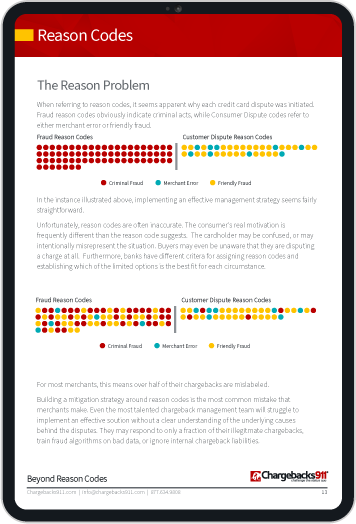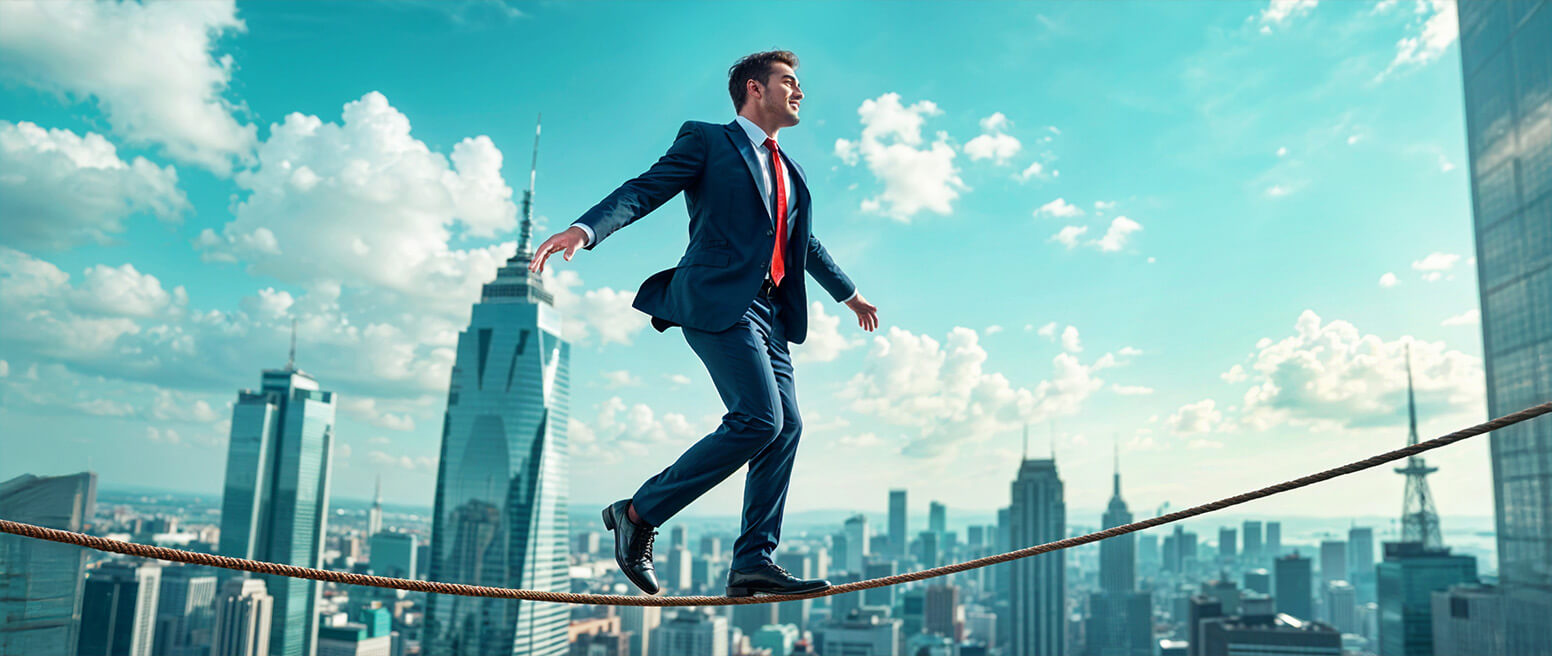Mastercard Excessive Chargeback Merchant: What is This Program & How Do You Get Out of it?
You’re probably familiar with chargebacks, at least to some degree. Most merchants are.
Unfortunately, too many of those sellers also believe that chargebacks are an unavoidable cost of doing business. And, if that’s the case, then trying to prevent them is just throwing good money after bad. Right?
The truth is that chargeback costs can extend far beyond the immediate loss of revenue and merchandise. In addition to standard chargeback fees, for example, card networks can levy hefty penalties on merchants who receive excessive chargebacks.
The Mastercard Excessive Chargeback Merchant program, or ECM, applies to merchants who exceed certain parameters regarding chargebacks received. What does that mean for you, though? In this post, we examine what the Mastercard ECM is, and explain what you can do to eliminate chargebacks and avoid entering the program.
Recommended reading
- Standard vs. High-Risk Credit Card Processing: Compared
- High-Risk Merchant Accounts: The Best Providers of 2025
- Visa Dispute Monitoring Program: What is the VDMP?
- What are Merchant Monitoring Programs? Why Do They Exist?
- Chargeback MATCH List | How it Works & How to Avoid Blackist
- What is the Amex Fraud Full Recourse Program?
What is the Mastercard ECM Program?
- Excessive Chargeback Merchant
The Excessive Chargeback Merchant program is a dispute compliance scheme created by Mastercard. The program's purpose is to exercise oversight regarding eCommerce merchants and prevent too many chargebacks from occurring on the Mastercard network. This is achieved by imposing penalties on merchants for noncompliance.
[noun]/ik • ses • iv • CHarj • back • mər • CHənt/The ECP has two designations: Excessive Chargeback Merchant, as well as Excessive Fraud Merchant (or EFM). We discussed the EFM in detail in another article. So now, let’s take a look at the ECM.
The aim of the Mastercard Excessive Chargeback Merchant program is to reduce chargebacks received by merchants. This is done by setting a standard chargeback-to-transaction ratio threshold, and imposing penalties on non-compliant merchants.
Yes. It is possible to be placed in both the ECM and the EFM program simultaneously. Under these circumstances, however, only the EFM program fees apply.
Mastercard calculates your chargeback rate by a simple formula: the current month’s first chargebacks divided by the total number of transactions in the prior month. This is based on your individual merchant ID, or MID. The Excessive Chargeback Merchant designation is applied to individual MIDs receiving an excessive number of monthly chargebacks on Mastercard-branded cards.
Mastercard uses network data to track chargebacks for all transactions, both card-present and card-not-present. The network then notifies acquirers whenever an individual merchant ID breaches the compliance threshold.
Why Did Mastercard Create the ECM Program?
Mastercard began monitoring transactions in November 2019, then began charging assessments in May 2020 (in all markets except Canada). According to Mastercard, the overall goal of the project is to “reduce chargebacks and strengthen the integrity" of the network.
Mastercard understands that identifying and preventing all chargebacks is an unrealistic goal. Fraudsters are always looking for ways to slip through a merchant’s defenses. Plus, mistakes happen from time to time, and merchants can make errors that lead to chargebacks. Then there’s friendly fraud, which is outside of your control for the most part.
All that said, Mastercard still wants the minimum possible number of claims occurring on their network. Their reputation is tied to the security and stability of card payments. Over time, runaway chargeback activity could potentially destroy consumer confidence and destabilize the entire payments industry.
The Mastercard Excessive Chargeback Merchant compliance label is not meant to punish merchants. It’s simply a way to exert negative reinforcement, motivating merchants to keep chargebacks under control. It also helps identify and remove bad actors from the Mastercard ecosystem.
Mastercard has had similar requirements in place for years. Other card networks like Visa also have programs outlining acceptable levels of chargeback issuances.
Learn about other chargeback & fraud enforcement programsWhat Are ECM Thresholds?
The Mastercard Excessive Chargeback Merchant program is an attempt to streamline the way chargebacks are monitored.The Excessive Chargeback Merchant label helps quickly identify offenders, leading to greater accountability.
The program is split into two categories: Excessive Chargeback Merchant (ECM), and High Excessive Chargeback Merchant (HECM). The card network will filter merchants into one program or the other based on whether or not they breach predetermined thresholds for monthly chargeback issuances:
| Number of Monthly Chargebacks | Monthly Chargebacks (% of Total Transactions) | |
| Excessive Chargeback Merchant Program | 100 to 299 | 1.5% to 2.99% |
| High Excessive Chargeback Merchant Program | 300 or more | 3% or more |

Penalties for Noncompliance
What happens if you’re placed in one of these monitoring programs? If this happens, Mastercard will immediately notify your acquirer, who will then inform you. In most cases, you’ll be required to submit a remediation plan that explains the excessive chargebacks, and lays out how you intend to resolve the situation.
There are no fees for the first month of participation in the program. If you can keep your chargeback rate under the acceptable program threshold for three consecutive months, you’ll be removed from the program. Otherwise, Mastercard will begin assessing non-performance fees.
Non-performance assessment fees start at $1,000 in the second month of the progam. However, they can climb as high as $100,000 per month if the non-compliance lasts more than 18 months. Additional penalties, such as issuer recovery charges, may also be applied.
As one might expect, the HECM designation carries stiffer penalties than the standard ECM label:
| Number of Months Above ECP Thresholds | Assessment if ECM in Violation Month (100-299 Chargebacks and 150-299 Basis Points) | Assessment if High Excessive (HECM) in Violation Month Chargebacks and Greater than 300 Basis Points) | |
| Violation Assessment | Violation Assessment | Issuer Recovery Assessment | |
| 1 | 0 | 0 | No |
| 2 | EUR/USD 1,000 | EUR/USD 1,000 | No |
| 3 | EUR/USD 1,000 | EUR/USD 2,000 | No |
| 4 to 6 | EUR/USD 5,000 | EUR/USD 10,000 | Yes |
| 7 to 11 | EUR/USD 25,000 | EUR/USD 50,000 | Yes |
| 12 to 18 | EUR/USD 50,000 | EUR/USD 100,000 | Yes |
| 19 + | EUR/USD 100,000 | EUR/USD 200,000 | Yes |
You aren’t immediately removed from the program just because you got your chargeback rate under the acceptable threshold. Your merchant’s status won’t be reset to “compliant” until you manage to keep your chargeback rate for the MID in question below the program threshold for three consecutive months. There is no probationary period once the business is deemed compliant.
As we mentioned earlier, the penalties for extended periods of noncompliance can be costly. In reality, however, if you’re considered a non-compliant merchant, your acquirer is more likely to simply terminate your account. They’re generally more willing to lose a merchant, rather than risk getting hit with penalties themselves.
If you lose your account due to noncompliance, you’d be added to the MATCH List; a list of terminated merchants maintained by Mastercard. Getting MATCHed makes it a lot harder to secure another merchant account. You’d probably be forced to use a high-risk processor, which could dramatically increase your costs. These additional operating expenses may be enough to sink some businesses entirely.
How to Avoid the ECM & Associated Fees
You can apply for an extension for individual MIDs using Mastercard’s Data Integrity Online. It’s not something you should count on, however.
Extensions are granted on a case-by-case basis at Mastercard’s discretion. Plus, the card network may still determine that you should be subject to the ECM designation. If that happens, there’s no other way to appeal the decision or avoid the resulting penalties.
A better plan is to lower chargebacks to an acceptable level and maintain them at that point.
We always recommend merchants start by identifying claims according to their true source. Tools like Intelligent Source Detection™ can look beyond superficial reason codes and help you trace your chargebacks to their source. With that information in hand, you can create a multi-tiered chargeback management strategy to prevent many chargebacks, and to challenge friendly fraud disputes when they occur.
Ready to learn more about how to stop chargebacks, recover your revenue, and avoid costly Excessive Chargeback Merchant fees? Get in touch with one of our experienced chargeback experts today.
FAQs
What is the Mastercard Excessive Chargeback Merchant program?
The Excessive Chargeback Merchant program is a dispute compliance scheme created by Mastercard. The program's purpose is to exercise oversight regarding eCommerce merchants and prevent too many chargebacks from occurring on the Mastercard network. This is achieved by imposing penalties on merchants for noncompliance.
What happens if a merchant gets too many chargebacks?
Merchants are placed in the Excessive Chargeback Merchant program after receiving an unacceptable number of monthly chargebacks. Businesses in the ECM program are fined by Mastercard. Being labeled a “High Excessive Chargeback Merchant” results in even higher penalties.
What is an excessive chargeback rate?
Mastercard defines an “excessive” chargeback rate as 1.5% of transactions for two consecutive months, with at least 50 chargebacks in each month.
How can I get out of the ECM program?
Merchants maintain their ECM status until they can decrease chargebacks below the threshold and keep them at the level for three consecutive months. Once a merchant has accomplished this, they are considered compliant once again.
What are the Mastercard ECM fees?
Non-performance assessment fees start at $1,000 but can climb as high as $100,000 if the non-compliance lasts more than 18 months. Additional penalties, such as issuer recovery charges, may also be applied.














